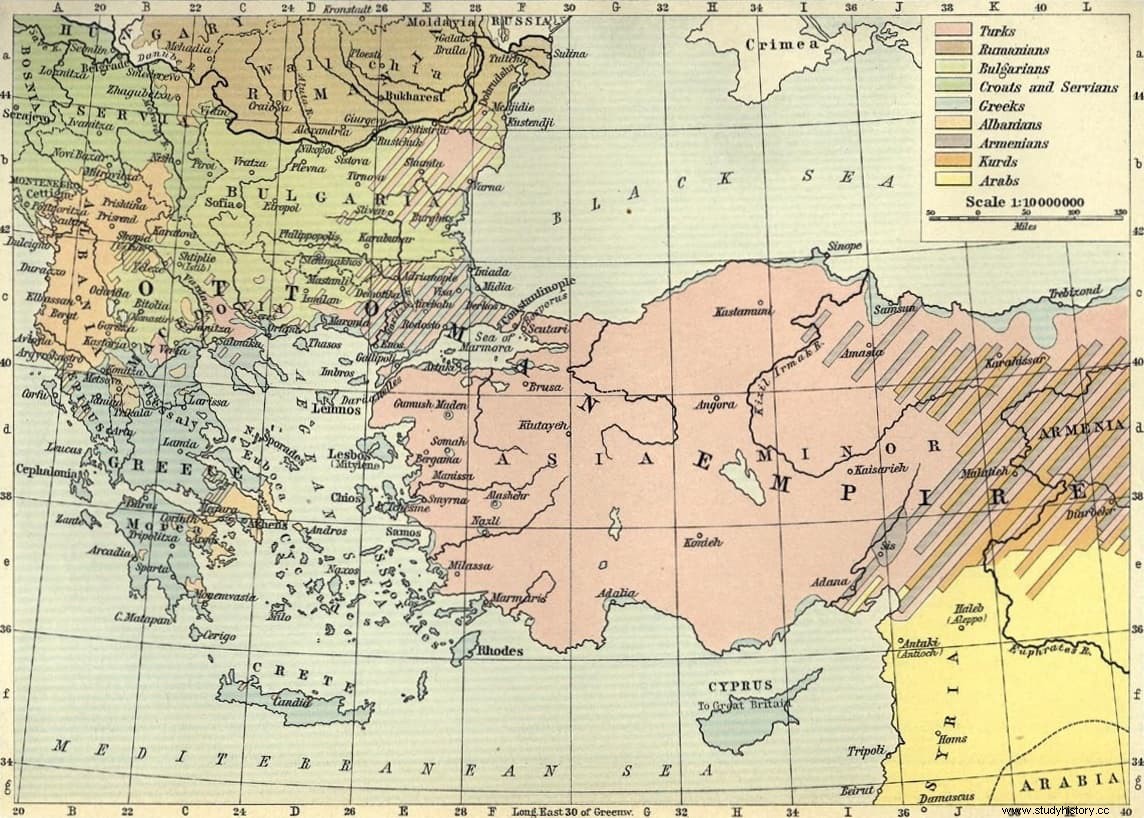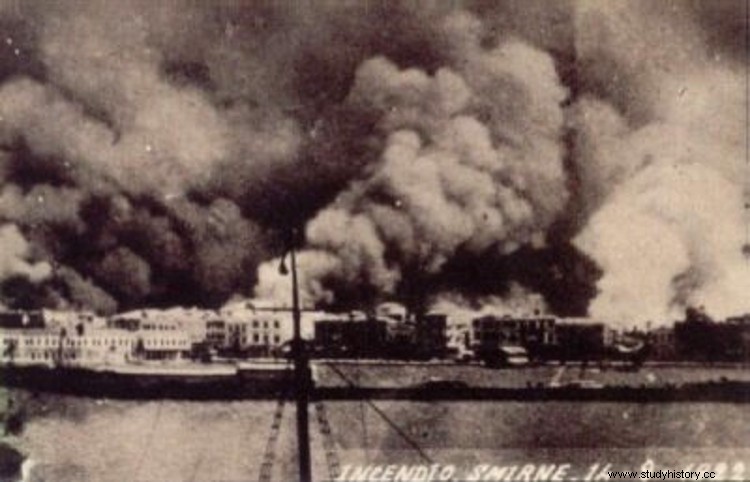That a merchant ship throws its cargo overboard to make room on board persecuted people at serious risk of being killed is something that should have made its crew and captain go down in history. With gold letters, too. However, that action, which was real and took place in the port of Izmir in 1922, was forgotten, perhaps because the ship was not flying the flag of a Western country. The name of her was not known until the investigations carried out by journalists and writers were successful:the Japanese Tokei Maru .
On April 24, 1915, in the midst of the First World War, the Ottomans began a campaign of arrests of Armenian citizens in Istanbul that, little by little, swelled a resounding list of hundreds of names and led to the persecution and deportation of all that community. The conflict between the two parties was old, since in the second half of the 19th century a strong nationalist spirit spread among the Armenians who aspired to create their own state, something that the Ottoman Empire was not willing to allow after the territorial losses suffered with the independence of Romania, Serbia and Montenegro.
The result of this situation were the so-called Hamidian Massacres (because of its promoter, Sultan Abdul Hamid II), which caused hundreds of thousands of deaths among the Armenians. The infamy was repeated in 1909 with the Adana Massacre, during which almost three tens of thousands more perished despite the fact that by then the overthrow of the one known as the Red Sultan (alluding to the spilled blood) had taken place and they were the Young Turks, nationalists and reformists, those who had taken power.
In 1914 the Ottoman President Enver Pasha brought his country into the world war on the side of the Central Powers. Although at first it expressed its support for the Armenians integrated into the army, the participation of this community in disturbances with the Muslims in the inner cities of Kars and Van, causing the serious defeat of Sarikamis before the Russians, was interpreted as a rebellion, deciding the government to order a mass deportation of Armenians to the southwestern part of Anatolia.

These transfers began on April 24, 1915 and, over several years until 1923, when the new Republic of Turkey was proclaimed, involved the expulsion from their homes of an unknown number of people, half of whom died of the road between the painful conditions in which they had to do it, when not deliberate killings. The death figures, as almost always, are controversial depending on the sources used:the Turks, who have always denied the consideration of genocide in this chapter for not being intentional or the result of planning for it, calculate between two hundred and six hundred thousand; others expand the number to a million and a half.
That was the context in which the events in Izmir took place, a city occupied by Greece in 1919 and where the Turkish population was seething with nationalism. When the Turkish troops took the city on September 9, 1922 and began a massacre of Armenians and Greeks, tens of thousands of them crowded into the port looking for a way to embark and save their lives, also threatened by a fire started in the Armenian quarter that would last four days and, in the end, would destroy the entire city.
Those unfortunates died crushed in avalanches or drowned when throwing themselves into the sea trying to reach one of the approximately twenty ships that were anchored. Among them were two French steamers, two Italians and one American whose crew members watched the daunting spectacle in astonishment without knowing very well what to do. They were there to rescue the refugees but only the North American welcomed them without demanding documents; the others only accepted those with a passport.
It was then that the captain of the Tokei Maru , a four-thousand-ton Japanese merchant ship that had just docked with a valuable cargo of silks and porcelain en route from Piraeus to Alexandria with stops in Heraklion and Crete, realized the seriousness of the situation and gave the unusual order to dump merchandise overboard. A fortune ended up at the bottom of the murky port waters but this left enough space on the ship to house hundreds of refugees who, in this way, were saved. The Tokei Maru then crossed the eastern Mediterranean and left them in the Athenian port of Piraeus. There were eight hundred and twenty-three lucky ones.

The action of the Japanese ship is especially noble if one takes into account that it was necessary to resist the pressure of the Turks, who dispatched several boats with soldiers towards the ship demanding the delivery of those people. The captain refused and warned that any act of force would be considered an attack on Japanese territory - as it was legally - and he would notify the High Commissioner of his country in Istanbul to make the corresponding protest before his government. Q>
The threat had an effect and the soldiers withdrew without imagining that there was something of a bluff in the Japanese's words, since the official referred to was the Count of Uchida, whose sympathies were openly with the supporters of Mustafa Kemal, the strong man of the country. There were witnesses to the meritorious Japanese action, such as the wife of Professor Birge, who worked at the Izmir International College, as well as testimonies from some of the survivors, from the US consulate and admiralty, not to mention the articles in the Greek press contemporary of the time.
In the summer of 2016, Athens presented a plaque to the Japanese ambassador, Masuo Nishibayashi, in gratitude for the rescue carried out in Izmir. Interestingly, the captain who starred in it remains unknown and we only know, from a Greek newspaper, that his name was Lou.
